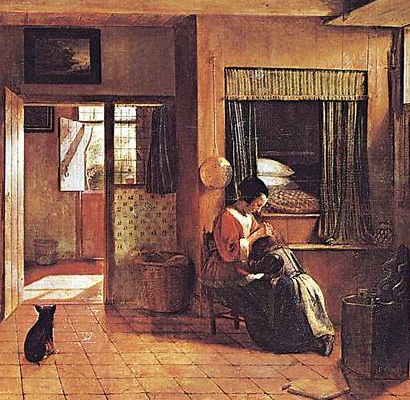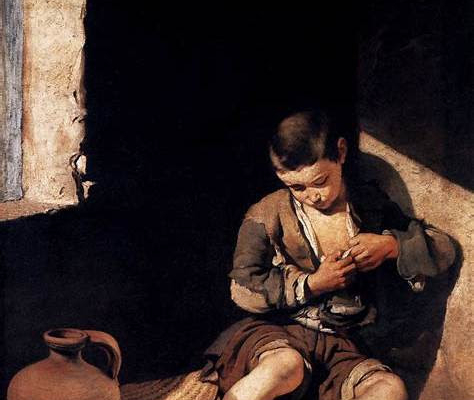Nit-Picking As Seen In Historical Art
Nit-picking has been featured in famous paintings and art throughout history, implying that lice have been causing stress for many years. Oftentimes, these paintings featuring delousing often carry symbolic meanings related to cleanliness, care, humility, or social class. Here are a few of our favorite pieces of art featuring lice removal.
“Mother Combing Her Child’s Hair” (also known as “Hunting for Lice”) by Gerard ter Borch, created around 1652–1653, is a masterful example of Dutch genre painting from the Golden Age. The painting captures a mother tenderly combing through her daughter’s hair, likely searching for lice—a common, unglamorous, but deeply human moment. The muted, soft lighting gives the scene a warm, naturalistic tone.
“Mother Combing Her Child’s Hair” (also known as “Hunting for Lice”) by Gerard ter Borch
“A Mother’s Duty” by Pieter de Hooch, painted between 1658 and 1660, is a beautiful and layered example of Dutch Golden Age genre painting. Like Ter Borch’s “Hunting for Lice,” it explores themes of care, domesticity, and virtue, but with its own architectural and symbolic richness. The act of delousing—though humble—becomes a symbol of the mother’s responsibility, care, and moral oversight.
“A Mother’s Duty” by Pieter de Hooch
“Maternal Care” by Caspar Netscher, painted in 1669, is another rich example of Dutch Golden Age genre painting. Like his contemporaries, Netscher used intimate domestic scenes to highlight values of virtue, order, and family responsibility, but he did so with a distinctive focus on elegance and refinement. The painting dignifies what might otherwise be a mundane or unpleasant task—lice picking—as a form of loving, attentive care. It emphasizes the emotional labor of motherhood.
“Maternal Care” by Caspar Netscher
“The Young Beggar” (also known as “The Lice-Ridden Boy”) by Bartolomé Esteban Murillo, painted around 1645–1650, is a powerful and empathetic portrayal of poverty and childhood in 17th-century Spain. It stands in contrast to the more domestic, middle-class lice-picking scenes from Dutch artists like Ter Borch or De Hooch by centering on self-care in the absence of maternal support, reflecting a much starker social reality.
“The Young Beggar” (also known as “The Lice-Ridden Boy”) by Bartolomé Esteban Murillo
If only Hair Fairies existed in these times to help with lice! Do you have a favorite art piece featuring nitpicking?
Welcome to the Hair Fairies blog where we share education, tips, and professional guidance on all things head lice.







